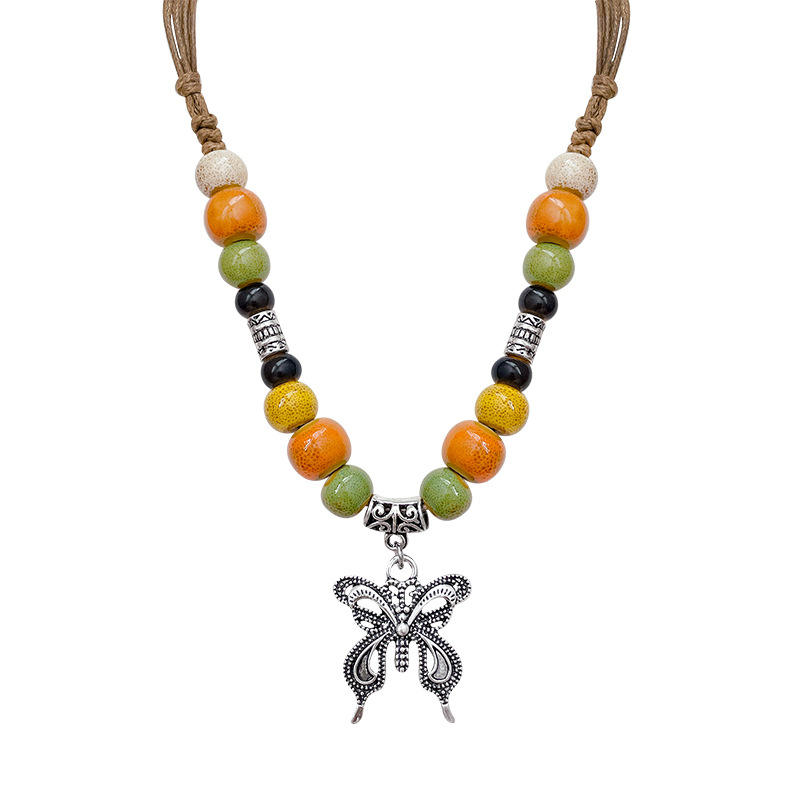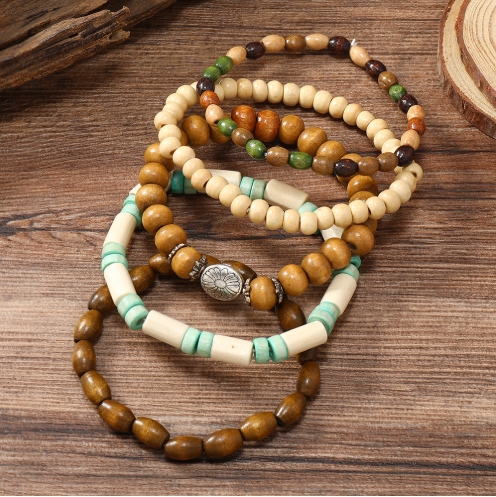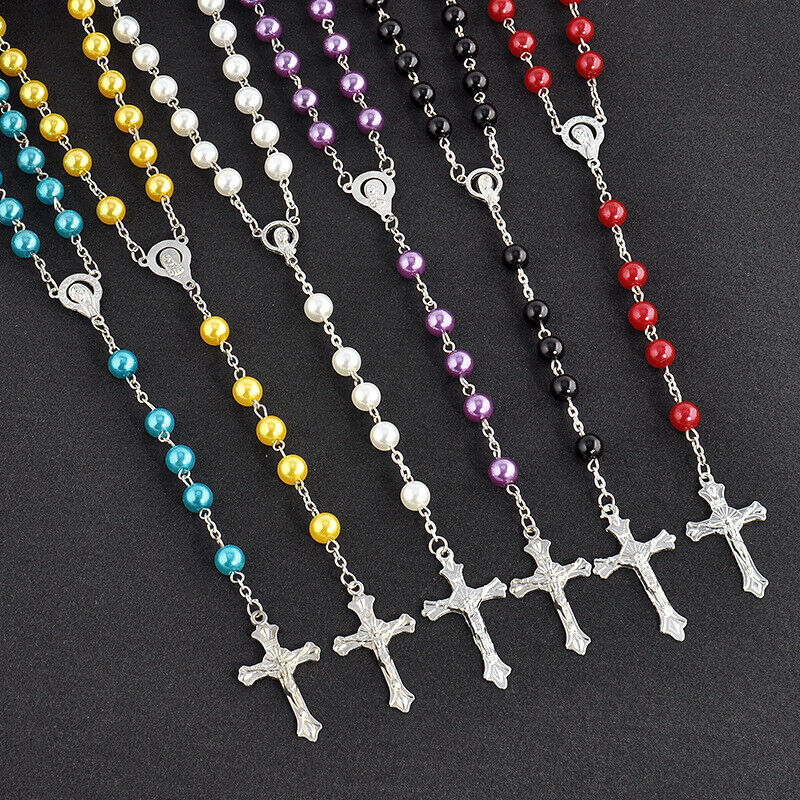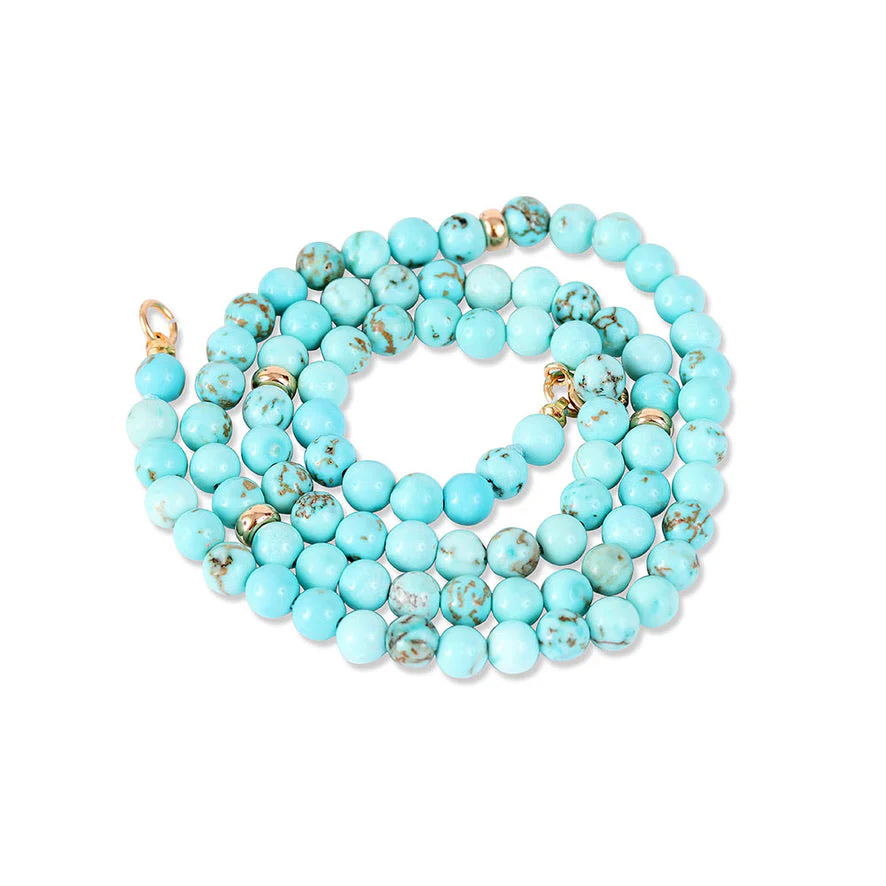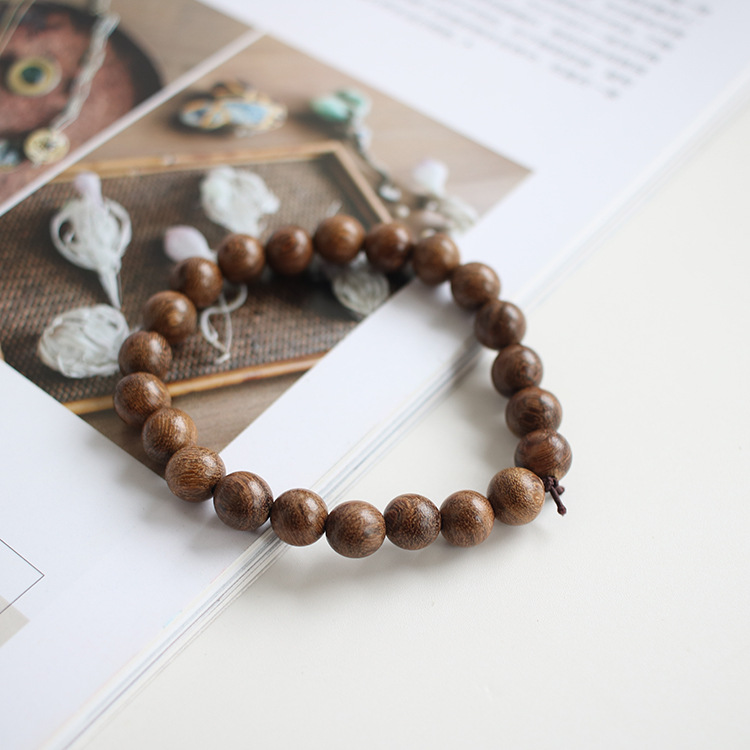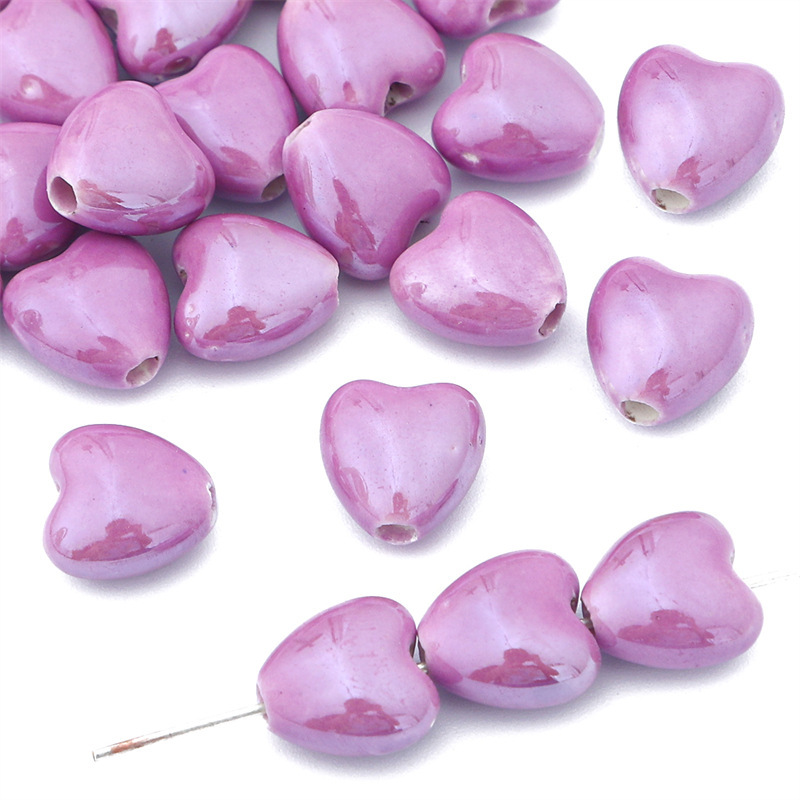Summary
Today, they continue to hold a prominent place in contemporary fashion and personal expression, characterized by their rich historical significance and the evolving techniques employed in their creation. The materials and tools required for creating clay bead bracelets are diverse, ranging from different types of beads, polymer and air-dry clays, to various stringing materials and clasps. The choice of these materials not only affects the durability and aesthetic appeal of the bracelets but also allows for a high degree of customization and creativity. Techniques such as shaping, texturing, and combining mixed-media elements enable crafters to produce unique and intricate designs that reflect personal style and cultural heritage. Current trends in clay bead bracelets highlight the versatility and personal touch that these accessories bring. Popular styles include textured beads, seasonal and holiday-themed designs, and personalized creations with names and vibrant colors. The influence of social media platforms like Pinterest and Instagram has amplified these trends, allowing DIY enthusiasts to share their work and draw inspiration from a global community. These trends underscore the appeal of clay bead bracelets as both fashionable and meaningful pieces. The environmental impact and sustainability of jewelry making have also become central themes, with many artisans and consumers seeking eco-friendly practices. The use of sustainable and upcycled materials, along with natural dyes, reflects a broader shift towards environmental stewardship. This commitment to sustainability not only addresses ecological concerns but also enhances the symbolic value of the jewelry, making clay bead bracelets not just a fashion statement but a testament to responsible craftsmanship and cultural expression.
History of Clay Bead Bracelets
Clay bead bracelets have a rich history that dates back to ancient times, serving as both personal adornments and cultural symbols. The earliest forms of personal ornamentation, including clay bead bracelets, can be traced back to the Neolithic period, a time characterized by the rise of agriculture and settled communities. This era marked a significant shift from a nomadic lifestyle to a more structured social order, facilitating the development of personal ornaments crafted from various raw materials such as clay, stone, and bone
. The importance of personal ornaments, including clay bead bracelets, grew significantly during the spread of the farming economy in the Mediterranean area between the 10th and 6th millennium BC. Archaeological evidence indicates a surge in the variety, technology, and quality of these personal adornments, reflecting the individuals’ identities within their cultural groups . These ornaments served as markers of cultural or ethnic identity and were essential in the study of acculturation and diffusionism across different prehistoric periods . As civilizations advanced, the forms and functions of jewelry diversified. In ancient Sumerian culture, jewelry included a range of body ornaments such as necklaces, earrings, and bracelets, showcasing the increasing sophistication in craftsmanship and design . The intricate designs and the use of various materials in these early societies laid the groundwork for future developments in jewelry-making, including clay bead bracelets. In addition to their aesthetic and cultural significance, clay bead bracelets also held symbolic meanings. In various cultures, bracelets made of clay and other materials were believed to possess mystical properties or convey specific messages. This tradition has persisted, with modern clay bead bracelets often symbolizing individual style or cultural heritage . Contemporary Indigenous artists continue to draw inspiration from ancient beadwork techniques, integrating traditional materials and designs with modern aesthetics. Indigenous beadwork, which includes the use of clay, glass, shell, and bone beads, remains a vibrant and evolving art form, deeply rooted in historical practices and cultural significance .
Materials and Tools
Creating clay bead bracelets requires a variety of materials and tools to ensure the best results and enhance creativity.
Materials
Beads
Beads form the central element of any bracelet. Experimenting with different types, colors, shapes, and sizes of beads can lead to unique and stunning creations. Mixing and matching beads with varying finishes, such as matte, glossy, metallic, or iridescent, can add depth and interest to your designs
. For those new to beading, starting with Czech glass beads or seed beads can be a great choice.
Clay
Polymer clay is a popular choice for making beads due to its durability and versatility. Polymer clay remains soft at room temperature and hardens when baked in the oven, resulting in a sturdy but slightly flexible final product. It offers a wide range of colors and special effects, such as metallic or granite finishes
. Alternatively, air-dry clay can also be used, which hardens at room temperature and can be painted or colored after drying. This type of clay is easier to handle and does not require special finishing products.
Stringing Material
The material used for stringing beads can vary based on the desired texture and pattern of the bracelet. Options include wire, cord, elastic, or thread, each offering different properties such as stretchiness or flexibility. Experimenting with various materials can result in different textures and patterns
.
Clasps and Findings
Different types, colors, and sizes of clasps and findings can change the look and functionality of a bracelet. Using various shapes such as round, square, or oval can provide diverse closure and connector options
.
Tools
Basic Tools
A set of basic tools is essential for manipulating materials and assembling bracelets:
- Pliers: Round nose, chain nose, and flat nose pliers are used for bending and shaping wire.
- Wire Cutters and Scissors: These are necessary for cutting wire, thread, or cord to the desired length.
- Ruler: Useful for measuring the length of the bracelet and ensuring accuracy.
Optional Tools
For more advanced beading techniques, additional tools can be helpful:
- Bead Board: A tray with grooves and measurements to help arrange beads before stringing.
- Bead Stopper: A clip that prevents beads from sliding off the wire.
- Crimping Tool: A plier that squeezes crimp beads to secure the stringing material.
- Needle: A thin metal rod with an eye that aids in threading beads.
Working with Clay
Shaping
Clay can be molded into various shapes and sizes using hands or tools. Techniques like rolling, cutting, or molding can create round, oval, square, or irregular-shaped beads. It’s essential to pierce holes through the beads before they harden to facilitate stringing later
.
Texturing and Piercing
Texturing can be achieved by using tools like rolling pins, texture sheets, or stamps. Piercing the beads with a toothpick or needle tool before they dry or bake is crucial to maintain their shape and make stringing easier
.
Maintenance
To ensure the longevity and quality of the materials, store clay in a cool, dry place in an airtight container. Cleaning tools and work surfaces after each use prevents color transfer and contamination.
Techniques for Making Clay Bead Bracelets
Creating clay bead bracelets is a rewarding and expressive craft that combines artistic flair with hands-on techniques. Here, we explore various methods and tools used to craft beautiful and unique clay bead bracelets.
Techniques for Shaping and Texturing
Rolling and Shaping Beads
Begin by protecting your work surface with newspaper or a plastic tablecloth. Cut off the desired amount of clay and shape it into cubes or tubes, refining imperfections with water. Use a tapestry needle or toothpick to make holes in the beads, and let them dry appropriately
.
Creating Texture
Using stamps, molds, or various household objects, you can imprint patterns and textures onto your clay beads. This added texture provides visual interest and depth to the bracelet
.
Incorporating Mixed-Media Elements
For a distinctive and stylish accessory, combine your textured clay beads with other materials such as fabric, leather, or metal. These combinations create unique and layered designs
.
Design Ideas
Geometric Patterns
Experiment with geometric shapes like squares, triangles, or hexagons for a modern twist on bead designs. Advanced techniques, such as using clay canes to create intricate patterns, require patience but yield stunning results
.
Tribal and Ethnic-Inspired Bracelets
Draw inspiration from traditional tribal and ethnic patterns. Combine clay beads with metal or bone beads to enhance the cultural authenticity and texture of your bracelet
.
Tips and Tricks
Piercing Beads Evenly
Piercing holes through beads can be challenging. To avoid crooked or distorted beads, always pierce from both sides using a toothpick, needle tool, or bead reamer
.
Choosing the Right Cord or Wire
Match the color and style of the cord or wire with your beads and clasp. Avoid unsuitable materials that might cause breakage, fraying, stretching, or skin irritation
.
Current Trends in Clay Bead Bracelets
Clay bead bracelets are an incredibly popular and versatile accessory that adds a touch of creativity and personalization to any outfit. One of the latest trends in clay bead bracelets is the use of textured clay beads. By using stamps, molds, or various household objects, crafters can imprint patterns and textures onto their clay beads, adding visual interest and depth to their bracelets
. Another fashionable approach is incorporating mixed-media elements, combining textured clay beads with other materials like fabric, leather, or metal to create a distinctive and stylish accessory. Seasonal and holiday-themed designs are also trending in the clay bead bracelet community. Crafters are creating bracelets inspired by the colors and motifs of different seasons—pastel-colored beads and flower motifs for spring, bright colors and ocean-inspired shapes for summer, warm earth tones and leaf patterns for fall, and cool colors and snowflake designs for winter. Additionally, incorporating seasonal charms or embellishments, such as snowflake charms for winter or leaf-shaped charms for fall, enhances the thematic appeal of these bracelets. Holiday-inspired bracelets are another significant trend, where crafters design bracelets for specific holidays like Christmas, Valentine’s Day, or Halloween using holiday-appropriate colors, shapes, and patterns. Personalized clay bead bracelets are also gaining traction. These often include flat clay beads that are gentle on the skin, mixed with round letter and gold ring beads, allowing for customization with names and vibrant colors, making them ideal gifts for special occasions like Mother’s Day. DIY enthusiasts are also exploring various types of clays and embellishments. Polymer clay is a favored choice due to its versatility, easy handling, and wide range of available colors, making it perfect for long-lasting, professional-finish beads. Many DIY tutorials now guide users through creating personalized bracelets, such as mother-and-daughter matching name bracelets, using polymer clay beads, letter beads, and gold spacer beads on stretch wire. To ensure a refined finished look, polishing the bracelet is a key step. This involves using a soft rag to remove any dust or smudges, resulting in a sleeker and shinier appearance. For color inspiration, tools like Adobe Color CC can help select and save color palettes from photos, providing a rich source of inspiration for clay bead bracelet designs. Pinterest is also a valuable resource for discovering beaded jewelry and bead embroidery images, searchable by color or collection, to inspire new and exciting designs.
DIY Community and Influence
The DIY community has significantly shaped the landscape of modern jewelry-making, particularly in the realm of clay bead bracelets. This community-driven approach fosters creativity, encourages personal expression, and supports a diverse range of styles and trends that resonate with individuals across the globe.
Choosing Colors with Intent
One of the hallmarks of the DIY community is the intentional use of colors in bead projects. Enthusiasts often select colors that reflect personal emotions, milestones, or aspirations, making each creation deeply personal and meaningful. The choice of hues in a clay bead bracelet can convey specific messages or commemorate special occasions, transforming each piece into a symbolic artifact of personal expression
.
Storytelling Through Color Combinations
In the world of DIY bead projects, the combination of colors serves as a language for storytelling. Each selected color represents a chapter, and their arrangement narrates a unique story. Whether it’s a sequence symbolizing personal growth or a combination that evokes a cherished memory, these visual stories are embedded in the bracelets, allowing wearers to carry their narratives with them
.
Creating Symbolic Patterns
Patterns in bead arrangements also hold significant meaning within the DIY community. By organizing beads in specific sequences or motifs, crafters can embed cultural, spiritual, or personal significance into their projects. These patterns can draw inspiration from traditional symbols or be entirely original, reflecting the creator’s unique perspective and story
.
Infusing Cultural Heritage
DIY bead projects offer a medium for individuals to connect with their cultural heritage. By incorporating colors and patterns that hold cultural significance, crafters can pay homage to their roots and celebrate the richness of their traditions. This cultural infusion adds depth and authenticity to their creations, making each piece not just a fashion statement but also a celebration of cultural identity
.
Mindful Beading
Engaging in DIY bead projects encourages mindfulness and intentionality. The process of carefully selecting each bead and considering its symbolic value fosters a deeper connection to the creation. This meditative practice allows individuals to express themselves thoughtfully and intentionally, enhancing the personal and emotional value of their jewelry
.
Personalizing Gifts with Meaning
DIY clay bead bracelets offer a heartfelt way to personalize gifts. By choosing specific colors and patterns, creators can craft pieces that convey sentiments of love, friendship, or support. These handmade creations become cherished gifts that carry both artistic and emotional significance, making them unique and memorable tokens for loved ones
.
Social Media and Trend Influence
Social media has played a crucial role in popularizing DIY bead projects and trends. Platforms like Pinterest and Instagram provide a space for creators to share their work, find inspiration, and connect with like-minded individuals. Trends such as butterfly motifs, cow prints, and geometric designs have gained traction through these platforms, reflecting the dynamic and ever-evolving nature of DIY jewelry
. The DIY community continues to inspire and influence the world of jewelry-making, blending traditional craftsmanship with modern trends. As enthusiasts engage in this creative practice, they not only craft beautiful pieces but also weave meaningful narratives, celebrating the art of personal expression through clay bead bracelets.
Fashion Influence
Jewelry has traditionally played a supporting role on the fashion runways, often serving as a subtle complement to the apparel on display. However, this season’s trends suggest a shift towards more prominent and bold accessories. The latest ready-to-wear collections reflect the world around us, encouraging individuals to free their minds and accessorize boldly
. This trend is evident in the resurgence of statement pieces, such as large bold metal necklaces and oversized rings, which have become essential elements in fashion. One of the most noticeable trends this fall is the emphasis on bold and metallic earrings, deep red focal pieces, and the complete embrace of crystals. Additionally, the brooch, a classic accessory, has made a notable comeback. This shift towards more striking jewelry is reflective of a broader movement towards maximalism in fashion. Designers like David Farrugia emphasize the appeal of combining minimal silhouettes with maximalist and bright gemstones, creating pieces that are both interesting and timeless. Logomania has also made a significant return, with branded chokers, earrings, and rings appearing at Chanel and Fendi. The desire for human touch and craftsmanship is evident in the DIY-like objects showcased by Tory Burch and Chopova Lowena. Waist-chains and body jewelry at Stella McCartney and Nensi Dojaka have updated the sexy cutouts and bodycon styles that have been prominent in recent seasons. Meanwhile, punk-inspired chains, studs, and spikes at Acne Studios and Balenciaga provide a grungy alternative to the Y2K revival. Nature-inspired motifs are another significant trend this season. Flowers, surfer motifs, shells, and raw stones set in metal or paired with delicate chains and beads reflect a collective interest in the natural world. This inclination towards nature is further enhanced by the use of sustainable materials and the incorporation of antique relics and handmade trinkets, which highlight a commitment to family and craft. As fashion continues to evolve, jewelry trends are also influenced by broader cultural phenomena. For instance, the popularity of mermaidcore, inspired by the live-action “The Little Mermaid” movie, has led to an increase in jewelry featuring seashells, freshwater pearls, and iridescent finishes. Similarly, the Taylor Swift Eras Tour has revived the trend of beaded friendship bracelets, emphasizing sentimentality and nostalgic revival.
Environmental Impact and Sustainability
The environmental impact and sustainability of jewelry making have become central themes in 2023, mirroring a global shift towards eco-consciousness. This trend is driven by both consumers and designers who are increasingly aware of their responsibility to the planet.
Sustainable and Upcycled Materials
Jewelry designers are increasingly turning to sustainable and upcycled materials to minimize environmental impact. The trend towards using reclaimed and sustainably sourced materials is more than a fleeting phase; it represents a collective responsibility towards environmental stewardship
. This approach not only helps in reducing waste but also conserves resources, aligning with the broader narrative of sustainability.
Environmentally Friendly Practices
More consumers are demanding environmentally friendly options from jewelry makers, prompting small handmade businesses to adopt greener practices. These may include donating a portion of sales to environmental causes, reducing packaging, offering biodegradable options, and choosing sustainably sourced and locally sourced materials
. These practices help to reduce the carbon footprint of jewelry production and promote eco-friendly consumption.
Natural and Sustainable Dyes
Contemporary bead artists are making mindful choices in color selection, with natural and sustainable dyes gaining popularity. This shift reflects a commitment to eco-friendly practices and contributes to a broader narrative of environmental stewardship
. The use of natural dyes not only adds symbolic meaning to the jewelry but also aligns with the growing trend of sustainable fashion.
Upcycled Plastic Beads
While plastic beads are not as common as they were in the mid-1900s, some forms of recycled plastic, such as vinyl, are still used to make artisan beads. This practice helps in repurposing waste materials and reducing the demand for new plastic production
. The resurgence of vintage plastic beads also emphasizes the importance of recycling and reusing materials in modern jewelry making.
Mixed Materials and Recycled Components
Incorporating mixed materials, including recycled or upcycled components, into DIY jewelry designs is another way to embrace sustainability. Using different textures, shapes, and sizes of materials can create unique, personalized pieces that reflect individual styles while promoting environmental responsibility
. This trend encourages creativity while making a positive environmental impact. By adopting these sustainable practices, the jewelry industry is making significant strides in reducing its environmental footprint and promoting a culture of eco-consciousness among both creators and consumers.
Market and Economic Impact
The DIY jewelry market has seen significant shifts in consumer behavior and product popularity over the past few years. The rise of online shopping continues to dominate, making it crucial for businesses to establish a strong online presence, whether through marketplaces like Etsy or their own websites, enhanced by good design, functionality, and SEO practices
. One of the notable trends is the growing interest in niche and specialized products. For example, bar soaps, including niche varieties, have maintained steady search volumes since their rise in 2020, reflecting a continued consumer interest. Similarly, men’s skincare products have shown a consistent increase in searches, indicating a growing market segment that DIY jewelry businesses could cater to with tailored products. Minimal packaging is also becoming a consumer preference, especially for bath and body products. Although specific search terms like “plastic-free shampoo packaging” may not be trending, products featuring minimal or zero-waste packaging are likely to attract eco-conscious consumers. This trend highlights the importance of sustainability in product offerings, which can significantly impact consumer choices. In the realm of jewelry, trends often combine influences from runway fashion and consumer demand. For instance, trends identified in the spring 2023 collections are now influencing market offerings, with pieces like pared-back staples and charms gaining popularity. Pared-back staples, particularly in yellow gold, are becoming favored for their timeless appeal. Charms, offering personalization options, have seen an increase in consumer interest, driven by designers like Dezso and Jacquie Aiche. Additionally, there is a rise in the demand for special occasion jewelry that is more accessible in terms of price. Designers are increasingly using materials like cubic zirconia and crystals to create affordable yet elegant pieces, catering to consumers looking for elevated designs without the high cost. This trend indicates a market shift towards making luxury designs more accessible to a broader audience.
